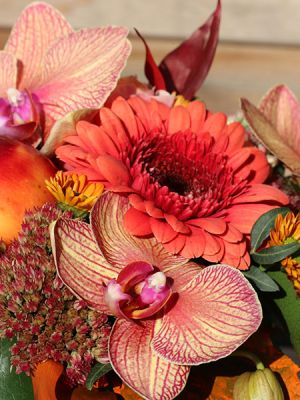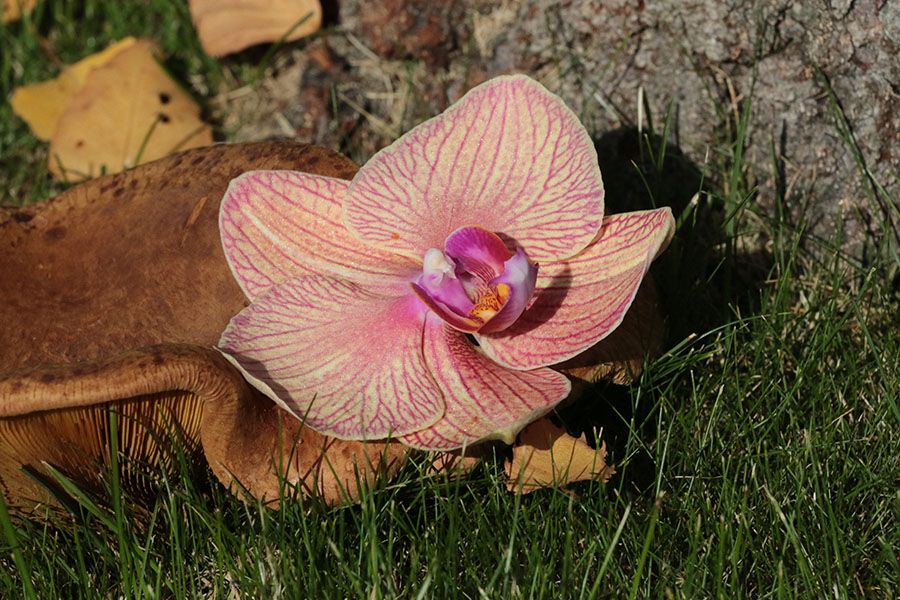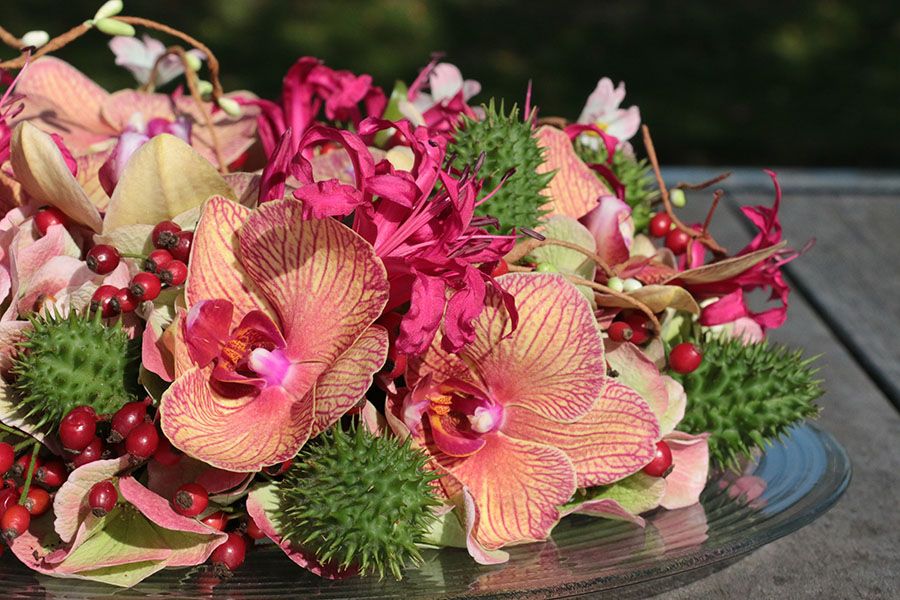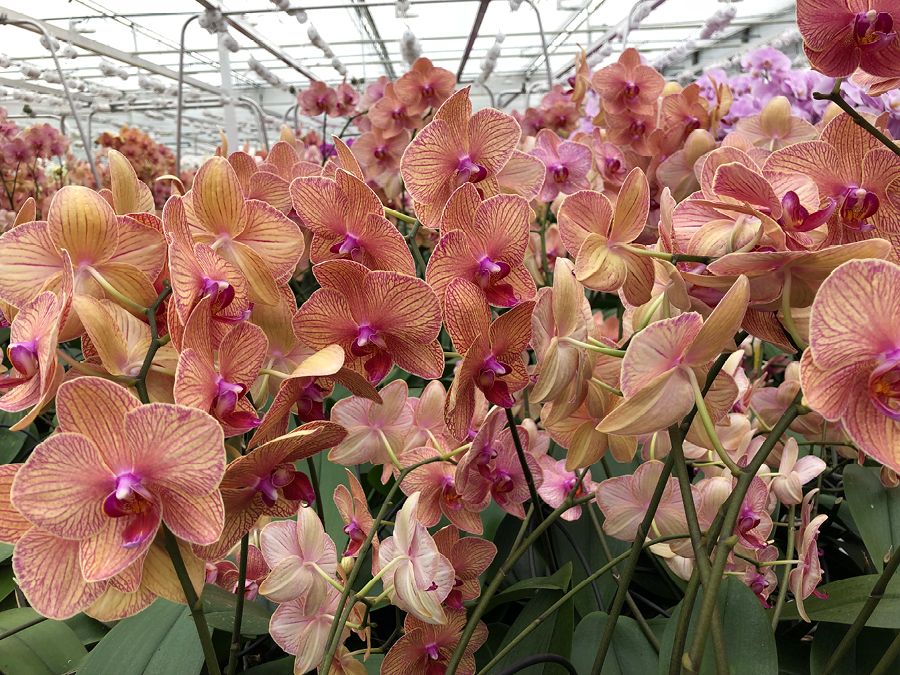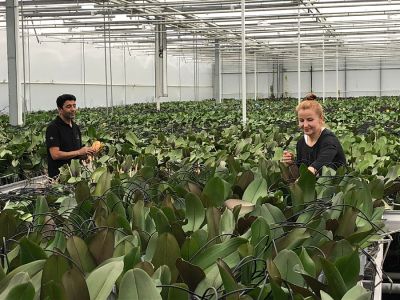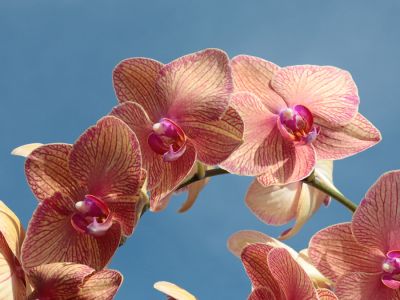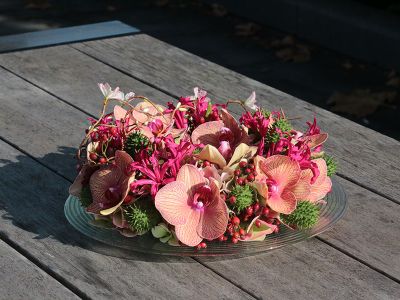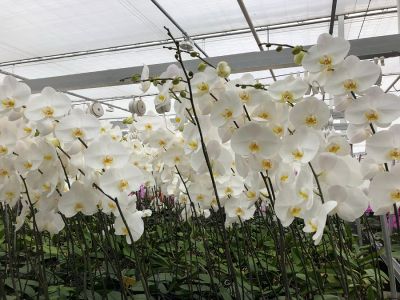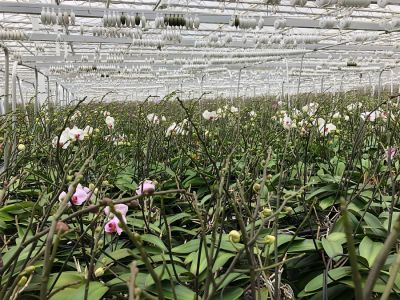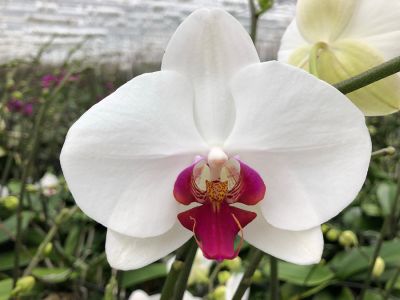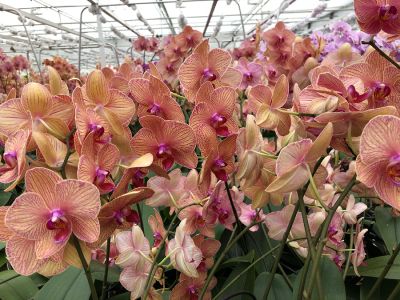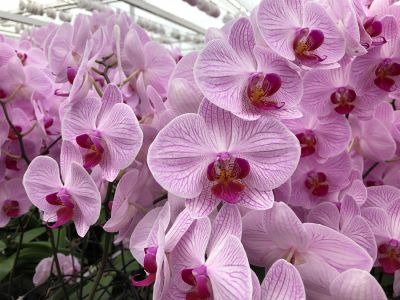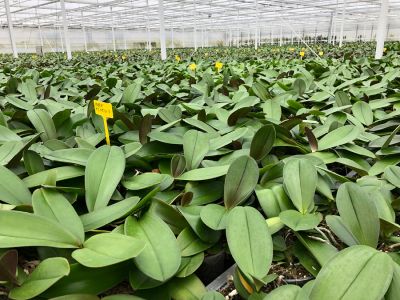Phalaenopsis Golden Treasure
In the spotlights
Ichtus Flowers has been founded in 1995 and at that time they only cultivated Anthuriums. In 2003, the cut Phalaenopsis was added to the assortment. Because of the success of this addition, a completely new greenhouse of 44000m2 was built in 2007. At present, cut Phalaenopsis is cultivated here on about 2.4 hectares. Potted Anthuriums are grown in 14 cm pots on the remaining surface.
Pieter, who has been the owner of the company since 2010, has given us an interesting tour of the company. Full of enthusiasm and passion he told about the cut Phalaenopsis. A special product with a high ornamental value and a challenging cultivation. After this extensive explanation, we understand why he likes this exclusive product so much.
Big family
The orchid family (Orchidaceae) is one of the largest plant families on earth. The number of varieties is estimated at around 20,000. Worldwide, more than a thousand genera are known to be distributed over dozens of subfamilies. One of the most famous species is the Phalaenopsis, also called Butterfly Orchid. The name Phalaenopsis comes from the Greek language and means 'looking like a moth'.
This orchid originally grows in tropical rain forests in the trees. The orchid is a so-called Epifyt. These are plants / organisms that grow on living plants / trees, without taking food from them. That is why pot orchids are planted in special airy soil or bark. But they can also be hung or put in a beautiful vase without soil.
In the Spotlight
The cut Phalaenopsis is a versatile and exclusive product that is very popular among florists for making bridal work. Ichtus Flowers is not only market leader in the number of flowers produced, but also in terms of range breadth. And they are always searching for beautiful and special new varieties that can make the assortment even more unique / versatile. An absolute favorite in the market is the cut Phalaenopsis 'Golden Treasure', an elegant warm colored orange flamed flower. A variety that fits perfectly in warm autumn arrangements.
Care
The cut Phalaenopsis is transported in boxes. Upon receipt, you should remove the branches of the cut Phalaenopsis from the box as quickly as possible and dispose of the bottles. Then you can cut the stems at an angle and put them in lukewarm water. Fruit produces ethylene for maturing, but this gas is harmful to the Phalaenopsis. The cut Phalaenopsis should therefore never be transported in combination with fruit.

The cultivation
On a 4.4 hectare nursery, they grow the cut Phalaenopsis on 2.4 hectares. In the remaining part Anthuriums are grown in pots. At the beginning of 2019 an expansion will take place in the cut Phalaenopsis and the area of this cultivation will be a total of 2.9 ha.
Different types
The cut Phalaenopsis differs from the pot Phalaenopsis on a number of points. First, the cut Phalaenopsis is specially selected for the diameters of the flowers. In addition, the cut Phalaenopsis is tested for its vase life. The biggest difference in the production process is that the cut Phalaenopsis stays with the company for a number of years, and is cut every year. Ichtus is therefore very careful with the plants so they can keep them in a good condition. Pot plants, on the other hand, are sold after they have started to bloom.
The company grows around 15/16 varieties year-round. In addition, they have about 15 other varieties on a small scale. These are still in the test phases. It takes a very long time to test and develop new varieties into a year-round product, which is mainly caused by the long production process.
Long production process
The cut Phalaenopsis has a long production process. This makes the product not only very beautiful, but also very challenging, and it’s difficult to make a tight cultivation schedule. The plant material must be ordered from the breeder two years in advance. Because a plant needs a lot to grow in relation to other cut flowers before it gives the first marketable branches.
The plants arrive as a 'plug', a young plant that is planted in a larger pot by the company. These young plugs take an average of 1.5 years before they can be cut for the first time. Approximately 4 qualitatively fully-fledged cuts can be made of a plant before the plant eventually ends up in the container. An older plant takes an average of 40 weeks to be ready for the next cut. So there are about 3 cuts out of each plant in 2 years.
Playing with heat
A cut Phalaenopsis starts in the 'nursery' of the greenhouse where it is about 28 degrees Celsius. This is the most important room of the company. This greenhouse stimulates vegetative growth in 10 weeks. This means that the plant forms its leaves here, and not flowers. The stronger and more resistant the plant, the more beautiful the branches. Then the plant goes to the greenhouse where it is only 19 degrees, here they are 5 to 6 weeks. As a result of the transition to this cold greenhouse, a stress reaction occurs in the plant, causing it to produce flowers. As soon as this flower formation is visible, the plants are quickly transferred to the breeding department. This is the last stage before the flower is cut. In this section it is about 22 degrees. Here the plants stay 18 to 20 weeks. You see in this greenhouse that the plants make the first shoots for flowers, and develop into beautiful large flowers.
The plants are grown on roller tables. These are tables that can roll through the nursery. This allows the surface to be optimally utilized. The staff can work quickly and efficiently in this way. Every day several tables with different varieties are available for harvesting. Due to the slow growth rate, a daily harvest can only be guaranteed if there is a sophisticated cultivation schedule. This is partly motivated by choices that have to be made regarding future assortment.
If the flowers are cut, they are boxed and the product can be put on transport.
FloraPodium, 24 October 2018






